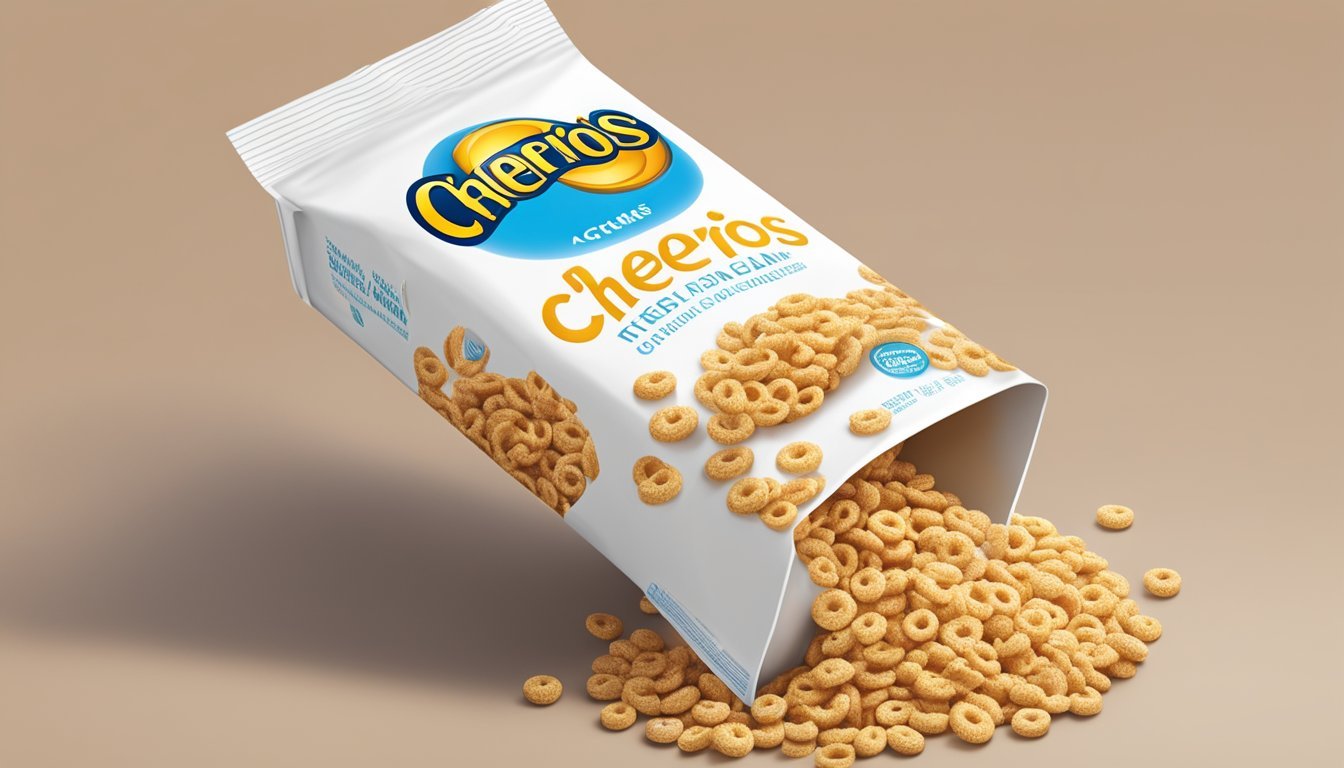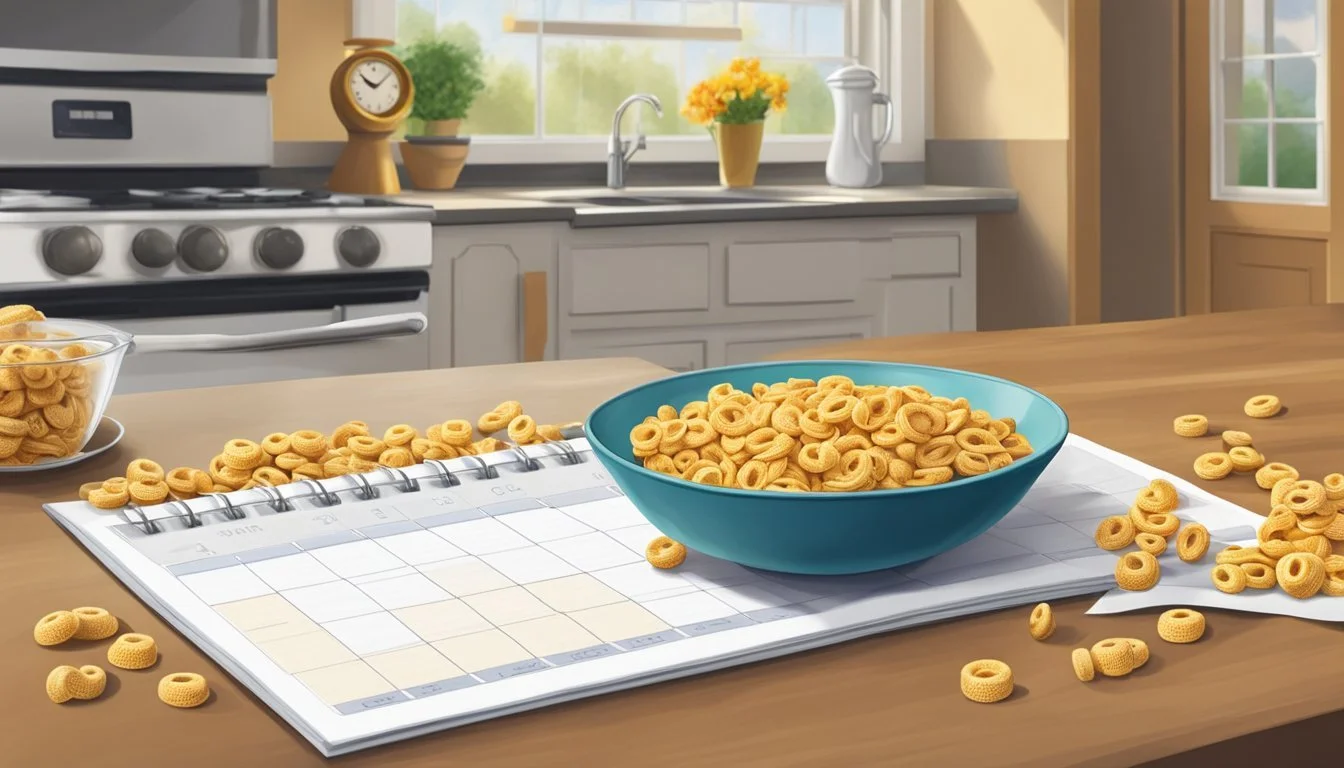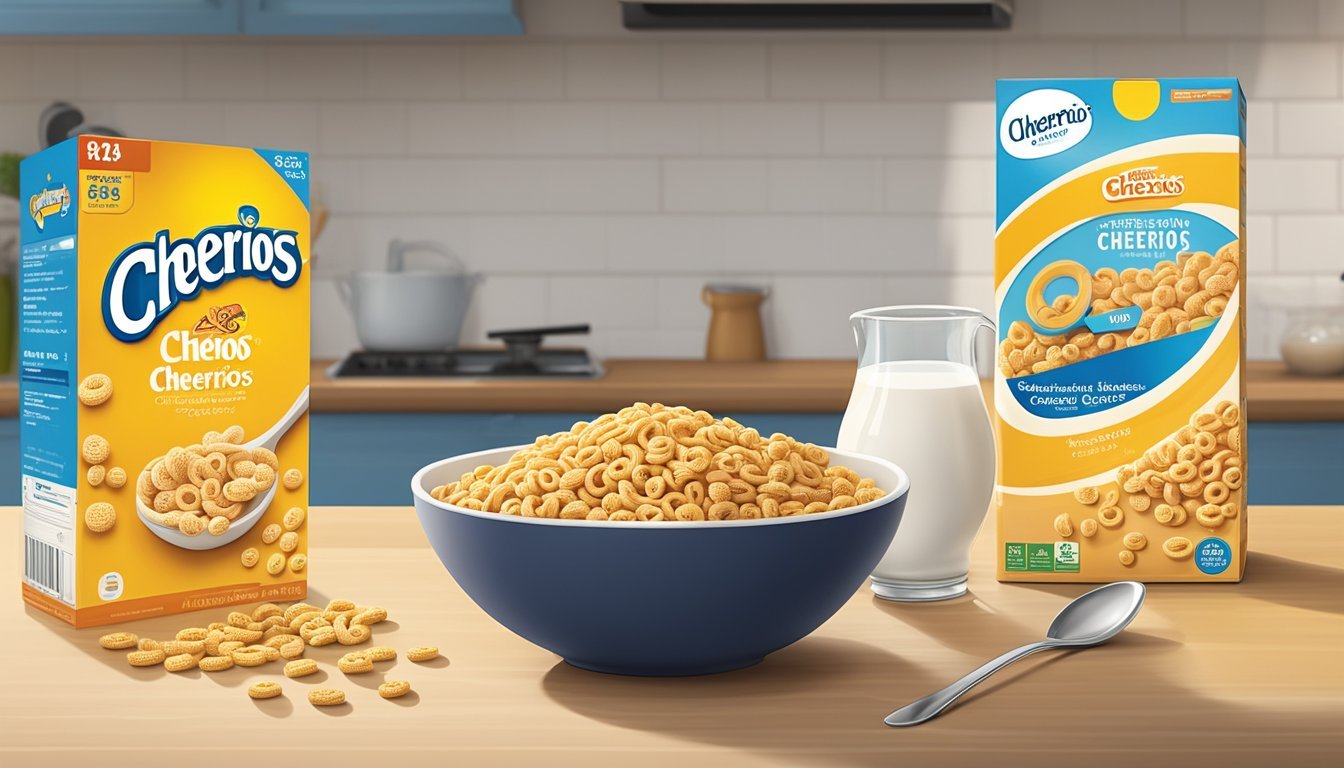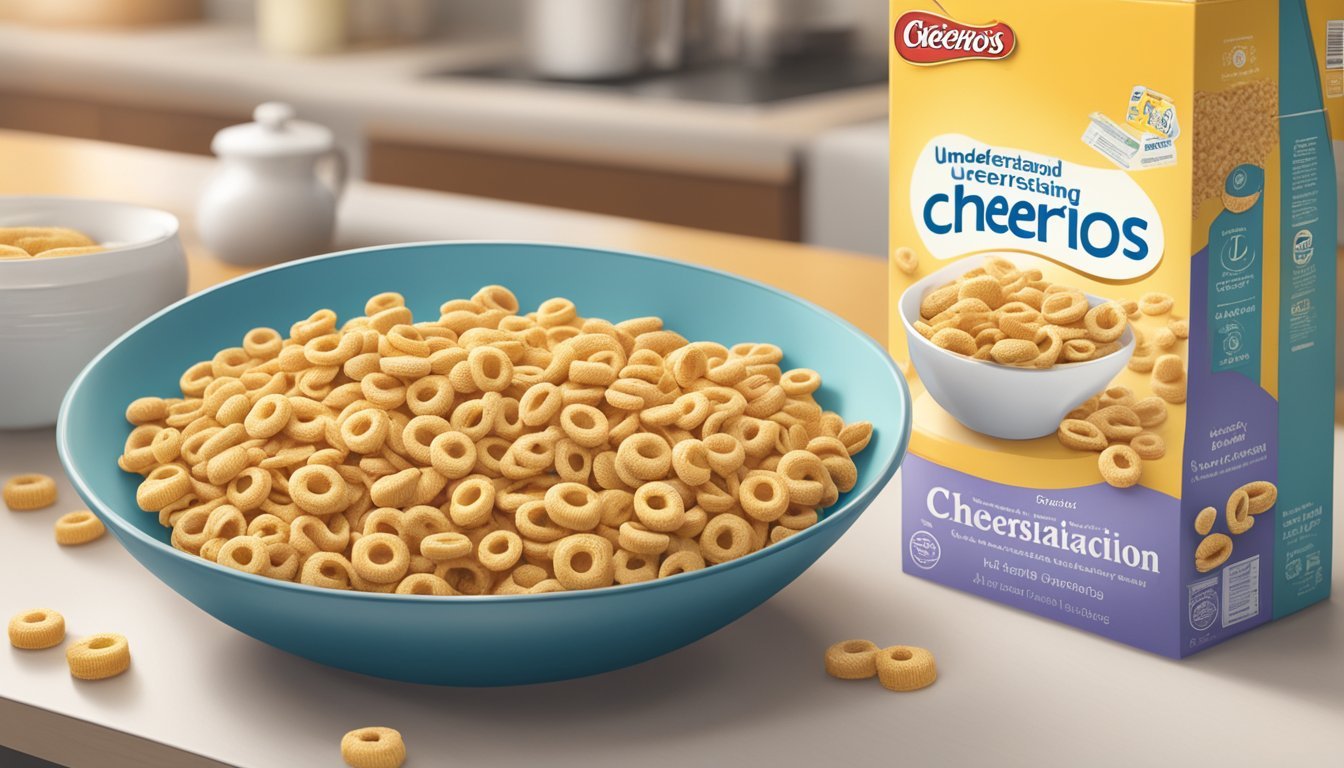How Long Do Cheerios Last?
Shelf Life and Storage Tips
Cheerios, (how long does cheerios last?) a popular breakfast cereal enjoyed by millions, have a considerable shelf life that makes them a staple in many households. Understanding the longevity and optimal storage conditions for cereals like Cheerios ensures that consumers enjoy their breakfast in the best possible state. Typically, Cheerios have a 'best if used by' date indicated on the package, which offers guidance on when the cereal is expected to maintain its best quality.
Cereal shelf life varies depending on a variety of factors, including the packaging and storage environment. For Cheerios, proper storage means keeping the cereal in a cool, dry place where it is sealed tightly to prevent moisture and pests. These conditions can help extend the freshness of an unopened box of Cheerios well beyond the printed 'best if used by' date, sometimes up to 6 to 12 months.
While the 'best if used by' date is not an expiration date, the quality of the cereal may begin to decline past this point. Factors such as flavor, texture, and nutritional content can be affected as time goes on. When evaluating whether Cheerios past this date are suitable for consumption, it is essential to use sensory cues—such as smell and appearance—to assess the condition of the cereal. If the Cheerios show no signs of spoilage and have been stored correctly, they may still be safe to consume.
Understanding Shelf Life
Shelf life refers to the amount of time a product, especially food items, maintain their quality and are considered safe to consume. For products like Cheerios, the "best by" or "best if used by" date indicates the period during which the product is expected to remain at peak quality. It is important to note that this date is not the same as an expiration date, which is more commonly associated with the safety of perishable goods.
The quality of Cheerios post their "best by" date may decline, meaning they might not taste as fresh or could lose some of their crispness, but they can still be safe to consume if stored properly. Manufacturers determine these dates to ensure customers experience the product at its best, but many dry cereals, including Cheerios, can be eaten after this date.
Shelf Life of Cheerios:
Unopened: Up to 6-12 months past the package date.
Opened: Best consumed within 4 to 6 months for optimal quality.
It's essential to store cereal in a cool, dry place to prevent spoilage. If Cheerios show any signs of spoilage or an off odor, they should be discarded. Using one's senses (sight, smell, touch) can often be the first step in determining whether the cereal has gone bad. It’s crucial to practice food safety and use common sense when evaluating whether Cheerios past their "best by" date are suitable for consumption.
Proper Storage Conditions
The longevity of Cheerios is significantly affected by the way they are stored, with particular attention to humidity, temperature, and air exposure. Storage in a pantry, refrigerator, or freezer can extend the shelf life if the cereal is kept away from moisture and sealed properly.
Pantry Storage
In the pantry, Cheerios should be stored at room temperature away from sources of heat and light. They maintain their quality best when kept in their original packaging and placed within an airtight container to prevent exposure to air and moisture. Cabinet or pantry conditions should be dry and cool to minimize the risk of the cereal becoming stale.
Temperature: Preferably between 60-70°F (15-21°C)
Humidity: Low humidity to prevent clumping or sogginess
Refrigerator Storage
When stored in the refrigerator, Cheerios can last between 6 to 12 months. The cereal should remain in its original packaging and, for added protection, be placed inside an airtight container to prevent the absorption of odors and moisture from the refrigerator environment.
Containers: Use airtight containers to shield against humidity.
Moisture: Check for and avoid any condensation inside the container.
Freezer Storage
Cheerios can be stored in the freezer to extend their shelf life beyond what the pantry or refrigerator allows. The cereal must be sealed in an airtight container or heavy-duty freezer bag to guard against freezer burn and moisture ingress. It is also important to ensure that they are completely dry before freezing to prevent ice crystal formation.
Packaging: Heavy-duty freezer bags or airtight containers are ideal.
Freezer Temperature: Maintain a constant 0°F (-18°C) for optimal storage.
Effects of Opening the Packaging
Once Cheerios packaging is opened, exposure to the elements can notably impact the shelf life and the quality of the cereal.
Sealed vs. Opened Packages
Sealed Packages:
Shelf Life: A sealed package of Cheerios maintains its freshness and is safe to eat until the best before or sell by date printed on the box, which typically ranges from several months up to a year from the production date.
Quality: The flavor and texture of Cheerios in sealed packets remain intact due to the protective barrier that safeguards against humidity and contaminants, ensuring the cereal stays crisp.
Opened Packages:
Shelf Life: Once opened, Cheerios should ideally be consumed within 2-3 months for best quality. The absence of the original airtight seal shortens the freshness period.
Quality Changes:
Texture: Cheerios may become soft or less crisp as they are exposed to air and moisture.
Flavor: The taste can become stale or slightly rancid because of oxidation and loss of flavoring agents.
Storage Tips: To prolong shelf life post-opening, one should store Cheerios in a cool, dry place, and reseal the packaging tightly after each use, or transfer to an airtight container.
Assessing Cheerios Quality
Evaluating the quality of Cheerios involves a sensory analysis focusing on color, texture, smell, and taste. These characteristics are critical in determining if the cereal has maintained its intended quality or has degraded over time.
Color and Texture
One first inspects the color of Cheerios, expecting a uniform golden-hue without any dark or discolored spots which may signal staleness or spoilage. The cereal's texture is another telltale sign, where freshness is identified by a firm, crunchy quality. If the Cheerios appear soggy or have lost their crispness, they may be past their prime and consumers should consider this a sign of degradation.
Smell and Taste
Odor provides a powerful clue to Cheerios' freshness. The cereal should have a characteristic grainy aroma without any rancid smell that would suggest the fats within have begun to oxidize. When it comes to taste, any deviation from the expected mildly sweet and nutty flavor to an off or stale taste indicates diminished quality. Fresh Cheerios should never leave an unpleasant aftertaste or any odd flavors on the palate.
Potential Cheerios Spoilage Signs
When assessing whether Cheerios have gone bad, one should carefully look for specific indicators of spoilage such as changes in the packaging, presence of mold, and signs of contamination or pests. These flags help determine if the cereal is still safe to consume.
Inspect Packaging
Integrity: The package should be intact with no tears, holes, or unusual bulges. Damage to the package can expose the cereal to air and moisture, accelerating spoilage.
Seal: A package that remains hermetically sealed suggests the Cheerios are likely protected from external contaminants.
Presence of Mold
Visual Check: Keep an eye out for any fuzzy, green, or black spots, which could indicate mold growth. Mold usually signifies that the product is not safe for consumption.
Odor: A musty or off smell can also be a strong sign that mold has developed within the cereal.
Contamination and Pests
Insects: Look for any evidence of insect infestation, including small holes in the Cheerios themselves, which might suggest the presence of pests.
Foreign Matter: Any unidentifiable particles or residue could point to contamination, which may make the Cheerios unfit for consumption.
Cheerios Varieties and Shelf Life Differences
Cheerios come in a variety of flavors, each with its own shelf life characteristics. Understanding these differences is crucial for maintaining the cereal's freshness and edibility over time.
Plain and Flavored Varieties
Plain Cheerios, the classic and original version of the cereal, are known for their robust shelf life that can extend up to two years when stored properly. Their simple composition without additional flavor coatings contributes to their longevity. In contrast, flavored Cheerios such as Honey Nut, Apple Cinnamon, Chocolate, and Frosted have a shorter shelf life. Typically, these can be expected to remain fresh for about six months to a year when stored in ideal conditions.
Original Cheerios: Up to 2 years
Honey Nut Cheerios: 6 months to 1 year
Apple Cinnamon Cheerios (how long do apple cinnamon cheerios last?): 6 months to 1 year
Chocolate Cheerios: 6 months to 1 year
Frosted Cheerios: 6 months to 1 year
Specialty Cheerios
The shelf life can also vary among Specialty Cheerios, which may include limited edition flavors or those that have specific dietary considerations. They generally follow the same guidelines as flavored Cheerios, maintaining quality for six months to a year. However, it's important to note that these are general estimates and actual shelf life can be influenced by factors such as packaging integrity, storage conditions, and ingredient composition.
For optimal preservation, all Cheerios should be stored in a cool, dry place, sealed in an airtight container or the original box if unopened. This practice helps in extending the cereal's edibility beyond its "best by" date, barring any signs of spoilage such as unusual odor, taste, or appearance.
Extending Shelf Life of Cheerios
Proper storage and rotation techniques significantly improve the longevity of Cheerios cereal. Utilizing airtight containers and adhering to stock rotation principles are fundamental to preserving Cheerios' quality.
Best Practices for Container Use
Containers: Switching Cheerios from their original packaging to airtight containers is crucial for maintaining freshness. Oxygen, moisture, and pests are the main threats to cereal's shelf life. Glass or plastic containers with a sealable lid are suitable options. For bulk purchases or larger households, using containers also helps manage food storage more effectively.
Recommendation: Transfer Cheerios to an airtight container immediately after opening.
Benefit: This practice can extend the cereal's optimum state well beyond the best-by date.
Rotating Stock and Using Older Cereal First
Stock Rotation: Always follow the “First In, First Out” (FIFO) method. When adding new boxes of Cheerios to the pantry, place them behind the older ones. This ensures that the oldest stock is used first, minimizing the chance of it going stale or expiring.
Rotation Tip: Clearly label your Cheerios with the date of purchase to track their age.
By applying these storage and rotation strategies, the consumer safeguards the cereal's taste and nutritional value for as long as possible. Although Cheerios contain oatmeal, which is a sturdy grain, improper storage can still compromise its shelf life.
Usage of Cheerios Beyond Breakfast
Cheerios, a staple breakfast cereal, are versatile beyond their common morning routine. Due to their mild flavor and satisfying crunch, they lend themselves to varied culinary uses and snacking avenues.
Recipes Incorporating Cheerios
Cheerios Granola: By mixing Cheerios with ingredients like honey, nuts, and dried fruits (What wine goes well with dried fruits?), and then baking the mixture, one can create a homemade granola. This granola can be used as a topping for yogurts, ice creams, or enjoyed on its own.
Cheerios Trail Mix: For a quick energy-boosting snack, Cheerios can be combined with nuts, chocolate chips, and dried fruits to make a nutritious trail mix. The cereal provides a whole grain component that adds a low-sugar crunch to the mix.
Alternative Snacking Options
Cheerios Bars: By binding Cheerios with a mixture of melted marshmallows and butter, and then allowing them to set, one forms Cheerios bars. These can be sliced into squares and serve as convenient on-the-go snacks.
No-Bake Cheerios Bites: Individuals can mix Cheerios with peanut butter, honey, and mini chocolate chips, then shape the mixture into small bites that are chilled until set. They offer a quick snack that combines the wholesomeness of Cheerios with the richness of chocolate and peanut butter.
Food Safety Considerations
When assessing the safety of Cheerios, or any food product, one should always consider the quality indicators and potential for bacterial growth. Cereal, like Cheerios, does not typically harbor bacteria that can make one sick if unopened and stored properly. However, once opened and exposed to moisture, bacteria can grow. It is crucial to note that an "expired" date often refers to peak quality rather than food safety.
Shelf Life of Cheerios:
Unopened: Approximately 6-12 months past "Best By" date
Opened: Roughly 4-6 months, maintaining best quality
The "Best By" date is the manufacturer's estimate of when the product will remain at peak quality. As this date passes, Cheerios may experience changes in taste and texture, but they are not necessarily unsafe to consume.
Quality Changes Post Expiration:
Texture: May become less crunchy
Taste: Can turn stale
Appearance: No significant change unless moisture has been introduced
It is advisable to rely on one's senses to assess if the Cheerios seem altered in texture or taste. If the cereal shows signs of moisture or an off odor, it should be discarded to avoid the risk of consuming spoiled food. Proper storage in a cool, dry place is essential to extend the shelf life and ensure food safety.
Storage Guidelines to Retain Quality
Store in a dry, cool environment
Transfer to an airtight container after opening
In conclusion, while Cheerios past their "Best By" date may not be at their peak quality, they can still be safe to eat if they have been stored properly and show no signs of spoilage.
Understanding Cereal Labels
When consumers look at cereal labels, they often notice dates stamped on the packaging. These dates are crucial in determining both the optimal time frame for enjoying the cereal at its peak quality and understanding how long the product might be safe to consume.
Decoding 'Best By' and Expiration Dates
Best By: This label indicates the manufacturer's estimate of when the cereal will be at its maximum freshness and flavor. It is not a safety-related date. Cereal tends to retain its quality for 6 to 12 months past the 'best by' date if it remains unopened.
Expiration Dates: Unlike 'best by' dates, expiration dates are less common on cereal boxes. When present, they suggest that the cereal is expected to meet its end of shelf life and should not be consumed past this date due to potential degradation in taste or nutritional value.
Peak Quality vs. Safety
Peak Quality: The period when cereal maintains its intended taste, texture, and nutritional benefits. Generally, cereal is considered to be at its peak quality up to the 'best by' date. However, it can often remain of good quality for several months beyond this date.
Safety: Cereals do not suddenly become unsafe to eat after the 'best by' date. If stored properly, cereals can still be safe to consume long after the date has passed, but there might be noticeable changes in flavor or texture. Consumers should use their senses to assess if cereal past its 'best by' date is still appropriate to eat.







